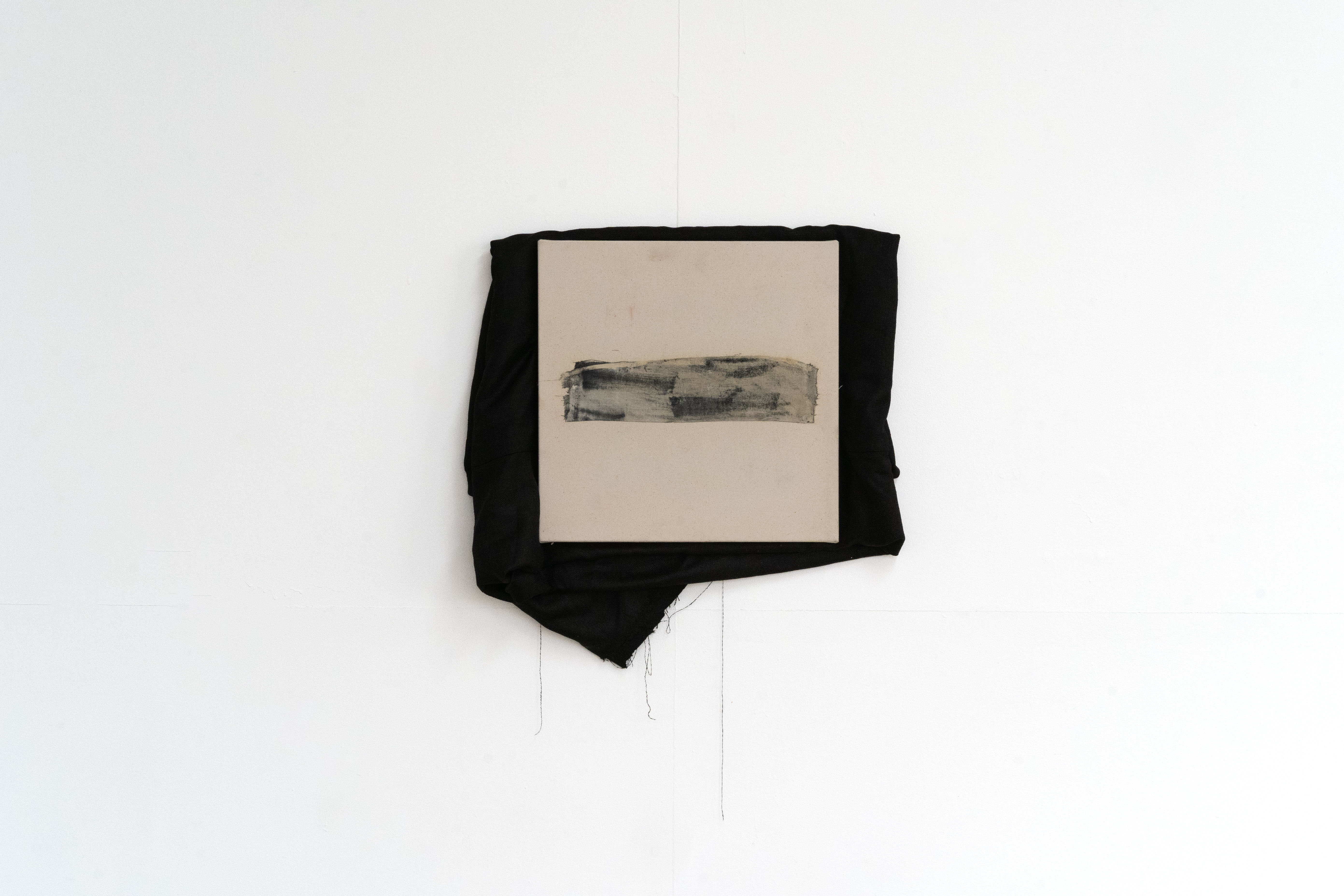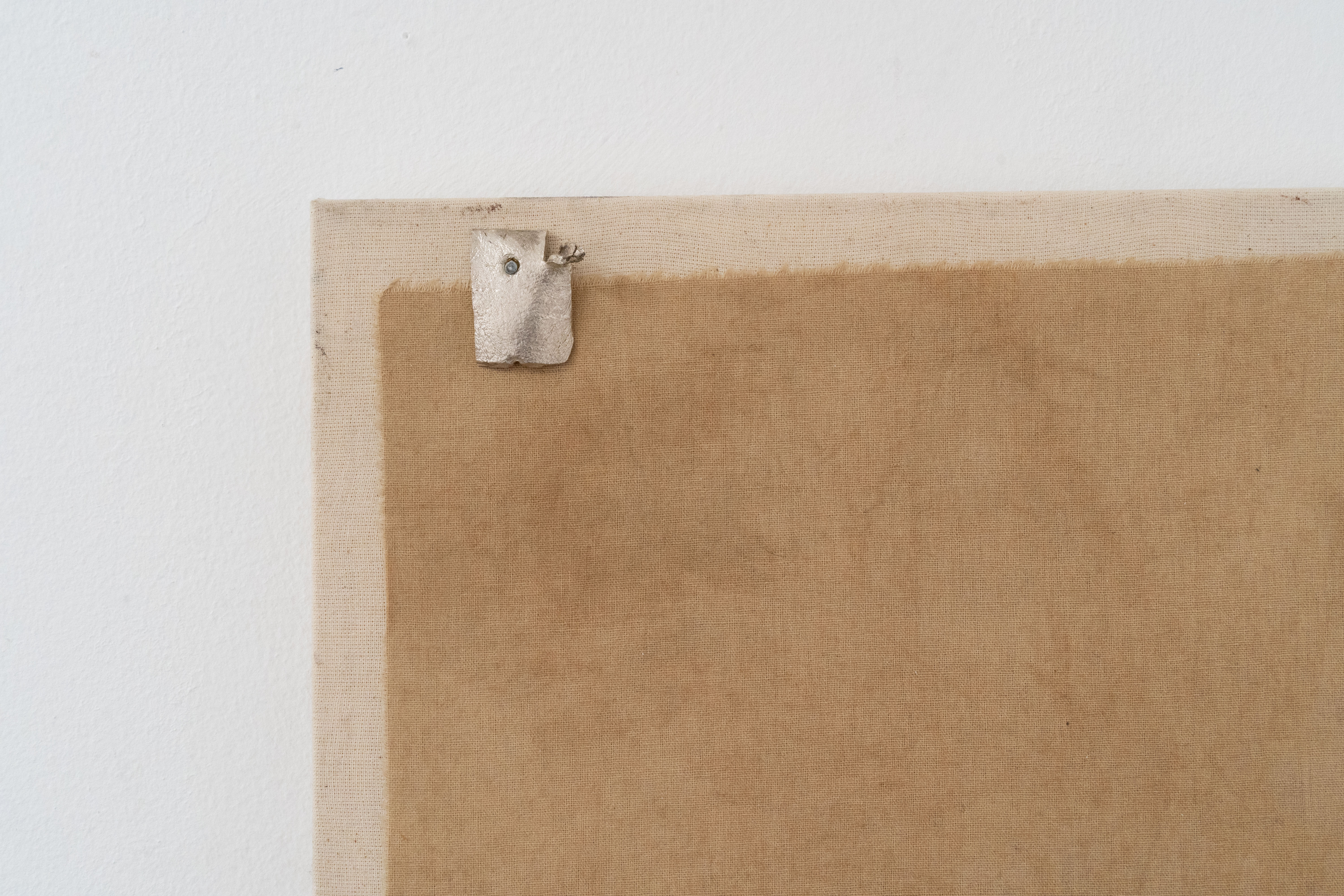MATTHEW ASLING
REESHA BASIMTA
(HEALING OF THE HEAD)
APRIL 1- 13 ‘25
The Assyrian term “Reesha Basimta” translates from Assyrian as "healing of the head," a phrase tied to the ritual anointing of the deceased with scentedoils. In Assyrian funerary traditions, this act honours the dead, purifies the body, and eases the soul’s passage. Mourning is a communal practice, markedby laments, symbolic offerings, and rituals that preserve the connection between the living and the departed.One such ritual is the drinking of bitter, unsweetened coffee on the morning of a funeral. This custom reflects the weight of loss, symbolic of the raw,unfiltered experience of grief.This exhibition engages with these traditions through utilising materials such as muslin, black burlap, coffee-dyed textiles, silver, bronze and wood. Eachmaterial containing meaning and cultural significance, for example, muslin has been historically used as a burial shroud in Assyrian funerary rites.Made in the process of mourning my Baba, ‘Reesha Basimta’ is a meditation on grief, both personal and cultural.

2. Mo’tha (The Act of Dying) Oil on muslin and canvas,104cm X 94cm$4000

1. Ta’zi (the Act of Sorrowing) Oil on muslin, canvas and burlap,55cm X 50cm.$1200

3. Sai’r (The Sign of the Cross)Oil, silver and iron on muslin and canvas46cm X 48.5cm.$1600

4. Qui’ra Nai’ia (The Epitaph)Bronze and acrylic on wood and cement
NFS

6. Pal’ptakhta (Tasseomancy), Silver, steel and coffee on canvas and muslin 27cm X 28cm $800

5. Tauro (The Bull)Graphite, silver and acrylic on muslin and pine29.5cm X 34.5cm$1200


Matthew Asling is an Australian Assyrian artist based in Naarm/ Melbourne. Asling employs a range of ready-made materials such as tarpaulin, gauze and burlap, in lieu of the traditional canvas. These materials function as found collage assemblages that emphasise tactility on the surface of the works. Asling’s work is informed by his Assyrian Australian identity, his family history of displacement and migration, and the history of Assyrian genocide and religious persecution. This history of displacement is woven into the fabric of his paintings, with Assyrian Neo-Aramaic script often stitched or ironed into the works. The works are reflections on the notion of home, diaspora and the complexities of belonging.


Documentation by Camille Chapman.